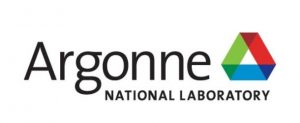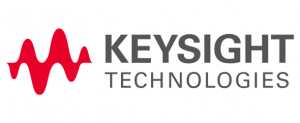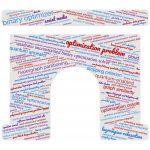Quantum News Briefs December 27: Fujitsu’s Digital Annealer achieves excellent results in the Kutxabank project of requesting assets from its investment portfolios; 2023 will see revolution in innovations in materials for quantum technology; Quantum computing brings new error correction challenges + MORE

Quantum News Briefs December 27: Fujitsu’s Digital Annealer achieves excellent results in the Kutxabank project of requesting assets from its investment portfolios; 2023 will see revolution in innovations in materials for quantum technology; Quantum computing brings new error correction challenges + MORE
*****
Fujitsu’s Digital Annealer achieves excellent results in the Kutxabank project of requesting assets from its investment portfolios
 Fujitsu’s quantum-inspired solution, Digital Annealer, has achieved excellent results in the ambitious project that the financial institution Kutxabank is developing to improve the allocation of assets to its investment portfolios. Quantum News Briefs summarizes the announcement below.
Fujitsu’s quantum-inspired solution, Digital Annealer, has achieved excellent results in the ambitious project that the financial institution Kutxabank is developing to improve the allocation of assets to its investment portfolios. Quantum News Briefs summarizes the announcement below.
A project in collaboration with the company Quantum Mads and the open innovation platform INNOLAB Bilbao. The first phase, carried out from February 2021 to July 2022 as a proof of concept, has concluded with excellent results and directly enables the start of the second phase that will lead to the industrialization of the algorithm. During the proof of concept, the performance of the solution that has been developed using Fujitsu’s Digital Annealer has been compared to the entity’s current classic solution, taking into account both the return and the associated risk or volatility, with significant improvements being observed in both cases. Fujitsu’s Digital Annealer has made it possible to calculate the optimal distribution of investments to be made, through a series of extremely complex permutation operations. For its part, Quantum Mads developed an algorithm that reduced the number of variables needed to formulate the problem.
The second phase of the project, whose completion is scheduled for December 2023, aims to optimize the processes already in place, and incorporates new functionalities by interacting quantitatively with the model in a real and current environment. The goal for Kutxabank is to create a prototype capable of detecting needs and opportunities that are covered, with a technological solution in a real environment, and that concludes with the start-up of the solution based on the prototype.
The model created applies quantum computing to the most computationally expensive tasks, at the forefront of the system, to organize investment strategies through asset allocation. It consists of choosing and distributing financial assets in an investment portfolio, one of the most important decisions faced by management companies. Click here to read complete announcement from JCN Newswire.
*****
2023 will see revolution in innovations in materials for quantum technology
 Jessica Wade, a research fellow at Imperial College’s Faculty of Engineering, predicts in her Wired magazine article that 2023 will see a revolution in innovations in materials for quantum technology. Quantum News Briefs summarizes below.
Jessica Wade, a research fellow at Imperial College’s Faculty of Engineering, predicts in her Wired magazine article that 2023 will see a revolution in innovations in materials for quantum technology. Quantum News Briefs summarizes below.
Currently, quantum technologies rely on materials that are expensive and complicated to prepare, and they often require expensive and bulky cryogenic cooling to operate. Such equipment relies on precious commodities such as liquid helium, which is becoming increasingly costly as the global supply dwindles. 2023 will see a revolution in innovations in materials for quantum, which will transform quantum technologies. Alongside reducing environmental demands, these materials will allow for room-temperature operation and energy saving, as well as being low-cost and having simple processing requirements. To optimize their quantum properties, research labs can manipulate chemical structure and molecular packing.
2023 will see more innovation in the design of materials for quantum technologies. Of the many candidates considered so far (e.g., diamonds with nitrogen vacancy defects, van der Waals/2D materials, and high-temperature superconductors), I’m most excited about the use of molecular materials. These materials are designed around carbon-based organic semiconductors, which are an established class of materials for the scalable manufacture of consumer electronics. We can use chemistry to control their optical and electronic properties, and the infrastructure surrounding their development relies on established expertise.
Recently, the UK Engineering and Physical Sciences Research Council announced a vision for innovation in materials for quantum technologies, led by Imperial College London and the University of Manchester. The London Centre for Nanotechnology—a collaboration of hundreds of researchers across Imperial, King’s and University College London—has considerable expertise in the simulation and characterization of quantum systems. The UK’s home for measurement—the National Physical Laboratory—just opened the Quantum Metrology Institute, a multimillion-pound facility dedicated to the characterization, validation, and commercialization of quantum technologies. Click here to read original article in-entirety.
*****
Scientists turn single molecule clockwise or counterclockwise on demand
 Scientists at the U.S. Department of Energy’s (DOE) Argonne National Laboratory report they can precisely rotate a single molecule that is only two billionths of a meter wide on demand. Controlling the rotation of this molecule could lead to new technologies for microelectronics, quantum computing and more. Quantum News Briefs summarizes below.
Scientists at the U.S. Department of Energy’s (DOE) Argonne National Laboratory report they can precisely rotate a single molecule that is only two billionths of a meter wide on demand. Controlling the rotation of this molecule could lead to new technologies for microelectronics, quantum computing and more. Quantum News Briefs summarizes below.
The key ingredient is a single atom of europium, a rare earth element. It rests at the center of a complex of different atoms and gives the molecule many potential applications.
“We are able to rotate this europium complex by 60 or 120 degrees to the right or left,” said Saw Wai Hla, physicist at the Center for Nanoscale Materials (CNM), a DOE Office of Science user facility at Argonne, and a physics professor at Ohio University. “The ability to control the motion of a rare earth complex such as this could impact a wide spectrum of technologies.” That includes next generation microelectronics, quantum technologies, catalysis to speed up reactions, conversion of light into electricity and more.
“Our primary mission is to understand at the level of atoms the properties of rare earths, which are critical materials to U.S. industry,” added Hla. “This particular project could beneficially impact many different technologies that exist now or could be developed.” Click here to read article in-entirety.
*****
Quantum computing brings new error correction challenges
 Arnaud Carignan-Dugas, a research scientist at Keysight, and Stefanie Beale, an R&D Engineer on the Quantum Engineering Solutions team at Keysight Technologies Canada are the authors of a lengthy, substantative EETimes article on error correction strategies for quantum computing. Quantum News Briefs summarizes their conclusions below.
Arnaud Carignan-Dugas, a research scientist at Keysight, and Stefanie Beale, an R&D Engineer on the Quantum Engineering Solutions team at Keysight Technologies Canada are the authors of a lengthy, substantative EETimes article on error correction strategies for quantum computing. Quantum News Briefs summarizes their conclusions below.
As we begin to scale up quantum computers, we will need error correction strategies analogous to those developed for classical computers. Quantum error correction procedures follow the encoding, measurement, and recovery procedures used for conventional computers. However, there are new challenges to applying these steps to quantum computers.
Given how fragile quantum states are to their environment, it is likely that large encodings will be needed. That is, hundreds if not thousands of qubits may be required to encode a single qubit state. As noted by Science.org, Google researchers believe it may be possible to sustain a qubit indefinitely by expanding error correction efforts across 1,000 qubits.
Much like in classical computing where there was uncertainty around which an error has occurred when a state is measured, the quantum computing measurement results tell us only that one error from a given set of possible errors happened; we don’t know for sure which of these errors occurred. Since states are more complicated for qubits than for bits, there are more types of errors, resulting in more uncertainty about which correction will return us to the correct state. Finding the best method for choosing a correction is a difficult problem, and one where there is still ongoing work.
If we know the noise acting on a system, we can calculate the best possible strategy for small codes. For larger codes, however, it becomes prohibitively expensive. Take, for example, the surface code, which is the most popular large quantum error correction code. Rather than pre-selecting corrections for each measurement outcome and using a lookup table, a classical algorithm is used to select recovery operations during every error correction step. This algorithm introduces significant latency.
Even for smaller codes using lookup tables, though, classical computers are still required to route measurement outcomes, select a recovery operation, and send that information back to the quantum computer. This introduces significant latency, thereby making the codes less effective. This is one major bottleneck to effective quantum error correction that many in the field are working actively to overcome. Click here to read the original article in-entirety.
*****
Sandra K. Helsel, Ph.D. has been researching and reporting on frontier technologies since 1990. She has her Ph.D. from the University of Arizona.





















